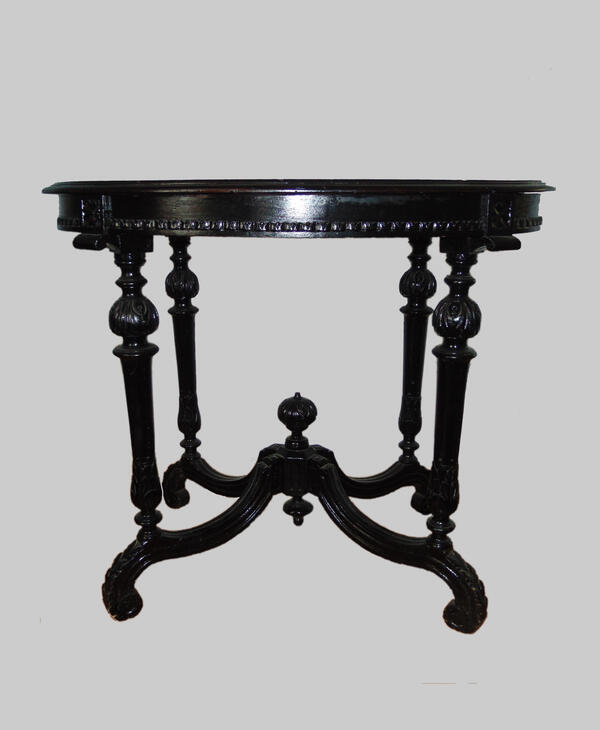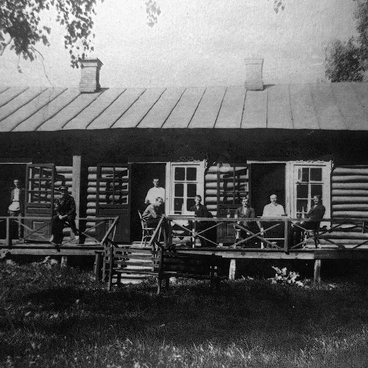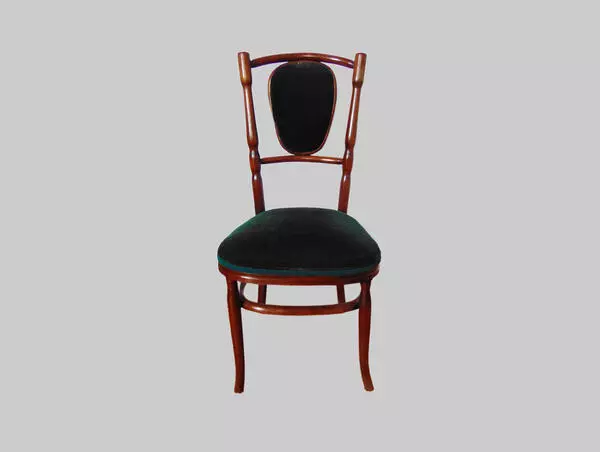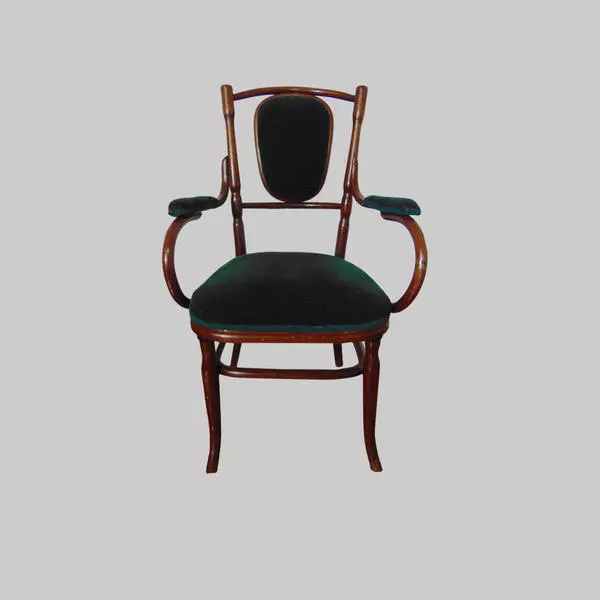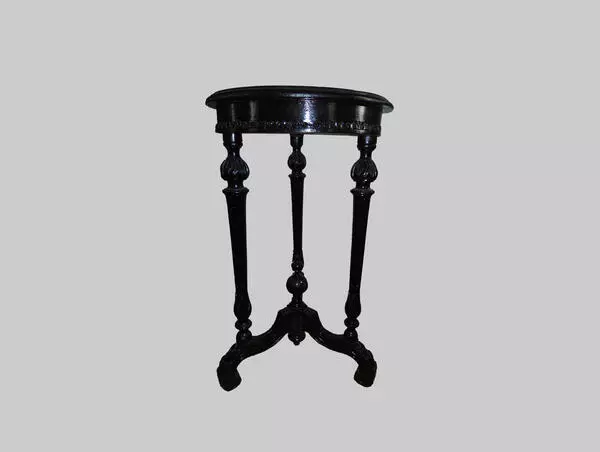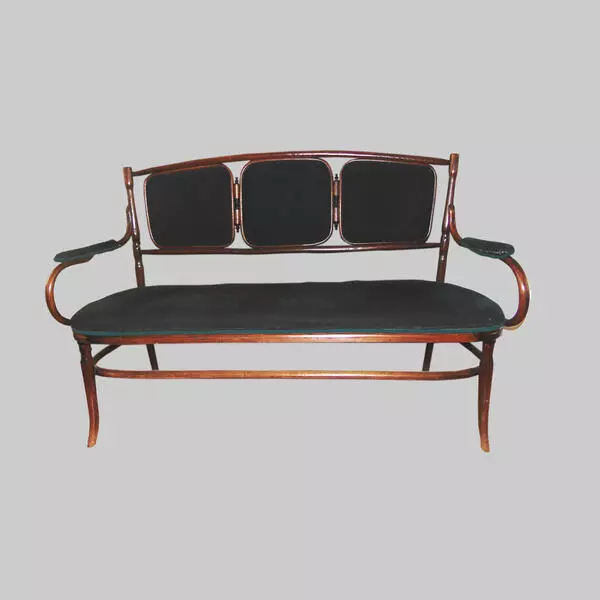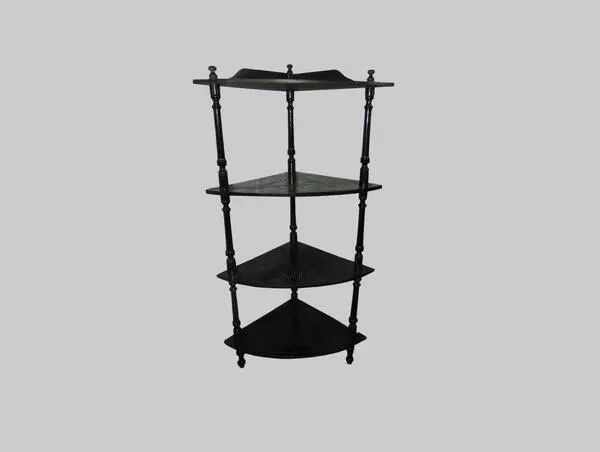This oval black table is one of the pieces featured in the large sitting room by the ingenious Austro-German woodworker Michael Thonet, who pioneered furniture made of rounded wooden elements. The table has four carved legs curved downwards and stands surrounded by Thonet’s chairs, armchairs and an elegant sofa. It is covered with an elegant burgundy velvet tablecloth, on which sits the famous Kuznetsov porcelain, and at the head of the table is a silver samovar.
Thonet’s wonderful furniture was very popular among Russian nobility at the turn of the 20th century, and creates a confidential and cozy atmosphere in the large sitting room, in which it is very easy to imagine the Aksakovs’ meetings with guests or their family evenings. Given the small size of the table, it could be quickly moved to any space in the room. It is likely that they also did handicrafts behind him, looked through the latest issues of literary magazines, or just talked.
The small size of this table makes it possible to refer it to the type of coffee (also corner or sofa) tables. This is the name given to elongated low tables, which are usually placed in front of a sofa, couch or a group of armchairs in the living room or in the hall to decorate the interior and temporarily place books, magazines, candlesticks and other small items. Coffee tables are usually used to form a seating area, but they can also help receive visitors. According to historians, such tables were first made in Europe in the 18th century.
Sometimes coffee tables are used to organize a small dining area: they can be used for crockery and cutlery, although their low height and small area limit functionality as a piece of dining furniture. These tables are designed for serving coffee, tea and light snacks. Later, when the popularity of periodicals grew, they began to keep the press on them, and this is how the name “coffee table” appeared.
The proliferation of coffee tables subsequently influenced book design and the book market: especially for people waiting for someone or something at the coffee table, the so-called coffee table books were invented: lavishly illustrated landscape-format hardcover books, usually entertaining or secular content.
Thonet’s wonderful furniture was very popular among Russian nobility at the turn of the 20th century, and creates a confidential and cozy atmosphere in the large sitting room, in which it is very easy to imagine the Aksakovs’ meetings with guests or their family evenings. Given the small size of the table, it could be quickly moved to any space in the room. It is likely that they also did handicrafts behind him, looked through the latest issues of literary magazines, or just talked.
The small size of this table makes it possible to refer it to the type of coffee (also corner or sofa) tables. This is the name given to elongated low tables, which are usually placed in front of a sofa, couch or a group of armchairs in the living room or in the hall to decorate the interior and temporarily place books, magazines, candlesticks and other small items. Coffee tables are usually used to form a seating area, but they can also help receive visitors. According to historians, such tables were first made in Europe in the 18th century.
Sometimes coffee tables are used to organize a small dining area: they can be used for crockery and cutlery, although their low height and small area limit functionality as a piece of dining furniture. These tables are designed for serving coffee, tea and light snacks. Later, when the popularity of periodicals grew, they began to keep the press on them, and this is how the name “coffee table” appeared.
The proliferation of coffee tables subsequently influenced book design and the book market: especially for people waiting for someone or something at the coffee table, the so-called coffee table books were invented: lavishly illustrated landscape-format hardcover books, usually entertaining or secular content.

